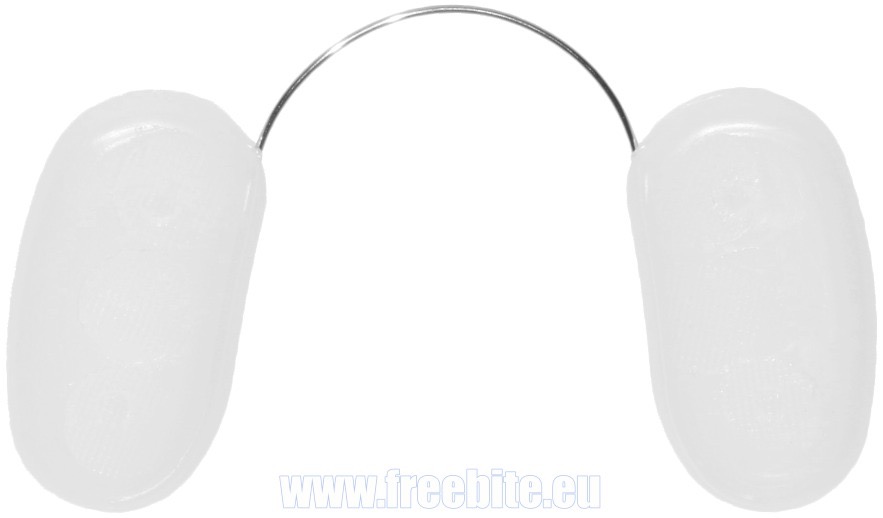Conventional water splints offer temporary relief of symptoms and relying on them permanently actually can be quite risky. They prevent the teeth from interdigitating with each other which normally helps to hold dental arches in a stable form. Teeth can shift their position over time when nothing stabilizes them, resulting in a situation where the upper and lower dental arches no longer match.
While cases initially tend to start well when employing water splints, they do not always progress as planned when it comes to move on, past the initial treatment stage to appliances or restorations which are made in the dental lab and require the use of dental casts. The reason for this is twofold:
- The cast transfer to the articulator incorporated some error so that the midsagittal, coronal and horizontal planes are not accurately reflected there and articulator artifacts result.
- The mandibular cast is oriented towards the maxillary one in a position other than the one the patient assumed on the watersplint.
The first problem often goes unnoticed, for instance when using a face bow oriented to the external ear canals when the ears are not positioned symmetrically. It can be entirely avoided by using functionally relevant references to the skull as described in Physio-Logic Articulation.
The second problem often occurs, because conventional water splints simply fall short when it comes to registering the mandibular position the patient assumes on them. The dentist feels compelled to employ some sort of bite registration technique which results in a completely different mandibular position and again requires the patient to accommodate mandibular posture requiring elevated muscle tension anew. Even if the dentist contrives some way in which he hopes to capture the relation between maxillary and mandibular teeth on the water splint, this usually occurs at the wrong vertical dimension and articulator artifact are introduced when altering the vertical dimmension there.
This is where the FreeBite solid comes in.
There are two general aspects in which a bite registration can fail:
- Mandibular Position: The bite registration may reflect a position of the mandible where accommodation is needed, muscles cannot function optimally and are unable to relax when not engaged.
- Mandibular Support: The bite registration may reflect the correct mandibular position, but teeth may not contact in such a way as to eliminate mandibular torque around three axes. Of special importance is a balanced support on the posterior teeth on either side.
The FreeBite solid addresses both issues. It consists of two lateral bite rims made of a special plastic which softens above 60°C and sets hard at mouth temperature. The bite rims are connected by an adjustable stainless steel wire which allows for their correct orientation to all sorts of dental arch shapes and serves as a handle as well. The bite rims can be softened in hot water, where the thickness of the softened layer depends on the duration of immersion. Once the FreeBite solid is placed in the mouth, the bite rims will slowly harden. As the patient taps his teeth onto the bite rims, a slowly increasing resistance will be noticed and possibly developing deflective contours can be evened out by lightly rubbing the teeth over them. After the bite rims have completely hardened, they offer an occlusal contact sensation rather similar to that on teeth, allowing the identification of even minuscule premature contacts.
Those can easily be corrected by immersing the FreeBite solid in hot water for a few seconds only, softening only a thin surface layer of the bite rims, reinserting it in the mouth and tapping the teeth on them until they have vanished. In patient with unilateral TMJ dysfunction, the affected joint may need maximal support by the back teeth on that side. However, if the contralateral joint would no longer be supported by the back teeth on that side, it may come to harm, even if previously healthy. This can be avoided by reheating the FreeBite solid in hot water except for the rearmost tooth on the side with the affected TMJ. When it is returned to the mouth and the patient taps his teeth on it, the vertical dimension on the side of the affected TMJ will be secured by the hard plastic, while the softened plastic will mold itself to the teeth, but not so much that no contact remains after it has hardened.
The objective is a bite registration in the mandibular position optimal for function and with the best possible occlusal support for restoration of normal TMJ function. This bite registration on the FreeBite solid may also serve as an immediate bite splint, giving the patient the opportunity to test the resulting bite for a few days or weeks before committing to potentially costly laboratory work. Finally, the FreeBite solid serves to mount the opposing dental cast. At this stage, possible deviations in the dental casts will manifest themselves, as the impressions of the original teeth should fit perfectly onto the stone teeth of the cast, unless some error during its production has occurred. It is better to find out about that now, than later, when some expensive restoration does not fit on the teeth!
There is almost no limit as to the variations in technique using the FreeBite solid in order to obtain the best possible occlusal registration, but subsequently I will describe to different ”hands-off“ ways which do not involve manipulating the patient’s mandible and pushing it somewhere else than where it feels most comfortable.
